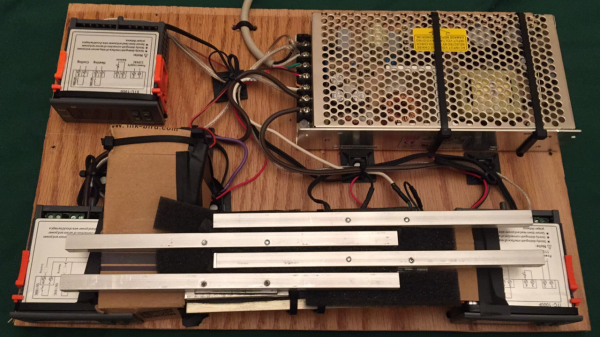3D Printers are great for printing out parts or items you need, but can they really help if you run out of paper clips? Yes, the all important and extremely overlooked bent metal fastener can put a serious damper on your day if not readily available. There is a solution to this problem, it’s called the Paper Clip Maximizer 1.0. The only consequence of using such a machine may be the destruction of mankind.
The machine takes a spool of wire and methodically bends it into a paper clip shape. Just like an extruder on a 3D Printer, there is a knurled drive wheel with a spring-loaded bearing pinching the wire. This drive wheel is powered by an RC servo that has been modified for continuous rotation. After the drive mechanism, the wire passes through a sturdy guide block. Upon exit, the wire finds the bending head, also powered by a servo. There is a bearing on the end of the bending head that is used to bend the wire around the guide block. After making several bends to form the paper clip, the bending head swings around to cut off the newly manufactured clip with an abrasive wheel. Unfortunately, this part of the process doesn’t work well. The cutoff wheel motor is powered directly by the Arduino that controls the entire machine, the power output of which is not enough to easily cut the wire. It can also leave a sharp burr on the cut wire which is not a great feature for paper clips to have. But we just see these as future fodder for hacking sessions!





 If you’re wondering why the delay in putting out this issue of Logic Noise, it’s partly because I’ve built up a PCB that incorporates essentially everything we’ve done so far into a powerhouse of a quasi-modular Logic Noise demo —
If you’re wondering why the delay in putting out this issue of Logic Noise, it’s partly because I’ve built up a PCB that incorporates essentially everything we’ve done so far into a powerhouse of a quasi-modular Logic Noise demo — 











